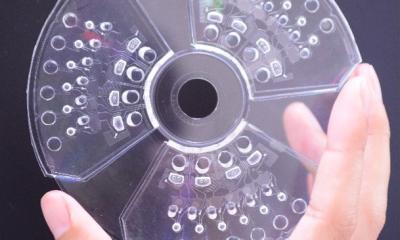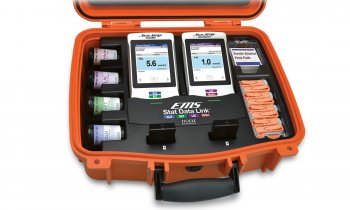New Rules for Proficiency Testing Referral
How to Avoid Getting Into Trouble
Treat a proficiency testing (PT) sample just like a patient sample. But don't. That has been the message labs have struggled with and in some cases lost their CLIA certificates over.


By Bill Malone (AACC)
Now, a new regulation from the Centers for Medicare and Medicaid Services (CMS) does a better job of explaining exactly what labs can and cannot do with PT samples, according to experts. The regulation also lays out a three-tiered system of penalties for those that break the rules—all the way from mandated education and fines, to shutting down labs. The regulation is focused on what CMS considers the worst kind of PT offense—referring a PT specimen to another lab.
CMS wrote the regulation in response to the Taking Essential Steps for Testing (TEST) Act of 2012, which aimed to give the agency greater latitude in punishing labs that did not blatantly try to cheat on their PT challenges.
The language in the new regulation should help labs understand better what actually counts as cheating, according to R. Bruce Williams, MD, chair of the council of scientific affairs at the College of American Pathologists. "It's been said that laboratories should treat PT testing in the same manner that they would a normal patient sample, but that's only true up to a point, and this final rule makes it more explicit that you can absolutely never send out a PT sample to another lab," Williams said. "When I explain this to laboratorians, I say that the PT sample cannot leave the four walls of your laboratory." Williams is a partner at the Delta Pathology Group in Shreveport, Louisiana.
Three Levels of Penalties
Even with a bit more room for discretion on CMS's part, labs must remain vigilant. In the new regulation, the first category of offense encompasses cases of repeat PT referral or cases in which a laboratory intentionally reports another laboratory's test results as its own—deliberate cheating. In these nstances, CMS has the authority to revoke the lab's CLIA certificate for at least 1 year, ban the owner and operator from owning or operating a CLIA-certified laboratory for at least 1 year, and potentially impose a civil monetary penalty.
CMS allows itself a certain amount of discretion when the owner of the lab is a large health system that operates several laboratories. In such a case, a full owner ban could shut down a large number of laboratories in one community, threatening patient care. In the new regulation, CMS added a provision to limit the reach of the owner ban for laboratories under the same ownership as the revoked laboratory, but only if there is no evidence that the other labs participated or were complicit in the PT referral.
The second category of sanctions apply when a lab refers PT samples to another lab—defined as a lab that operates under a different CLIA number—before the PT event close date, but still reports its own results to the PT program. In this case, CMS could suspend or limit the CLIA certificate for less than 1 year rather than revoke the CLIA certificate, and include other alternative sanctions, such as training for the lab's staff.
For the third, least serious category, CMS has the option to use only alternative sanctions, including a civil monetary penalty and CMS-directed staff training. This category covers a variety of cases in which a lab may unintentionally refer a PT sample to another lab, but catches the error, reports its own results, and importantly, never receives any results back from the second lab. CMS notes this can happen if a reference lab courier mistakenly picks up PT samples along with patient samples.
In the final rule CMS clarified that a referral would not be considered "intentional" if a CMS investigation revealed that PT samples were sent to another laboratory for reflex, distributive, or confirmatory testing; the referral was not a repeat offense; and the referral "occurred while acting in full conformance with the laboratory's written, legally accurate, and adequate standard operating procedure."
Staying Out of Trouble
Probably the easiest way to avoid accidentally referring a PT sample to another lab involves creating special mock patients in the laboratory information system (LIS). The lab can flag the mock patient records, noting they should never be sent out. This enables the PT sample to make its way through the lab just like an ordinary patient specimen—one of the cornerstones of PT—but not end up leaving the lab, explained Gary Horowitz, MD, the director of clinical chemistry at Beth Israel Deaconess Medical Center in Boston and associate professor of Pathology at Harvard Medical School.
"We put them in as patients because that ensures they're handled like patients, but you have to have the flag that says 'don't refer'," Horowitz said. "This system works very well for us. It's very clean and simple. And to the bench technologist, it's just another patient."
Having such a system in place is especially important with reflex testing rules, which are becoming more common as a quality assurance strategy, Horowitz said. Under CLIA, reflex testing of PT samples is okay, but only as long as the second test is performed within that same lab. "If, for example, a lab gets an abnormal thyroid stimulating hormone result, and would reflex to a free thyroxine (free T4), as long as the lab performs the free T4 itself, that's okay," he explained. "If you have those rules and the reflex test would go to another lab—either something under your control at a different street address, or to another lab outside your control—that could be a very bad thing as it might be considered a way to confirm the abnormal result."
14.08.2014











